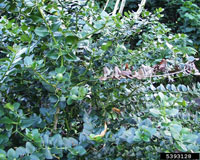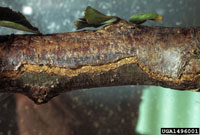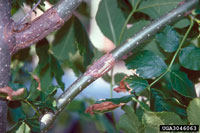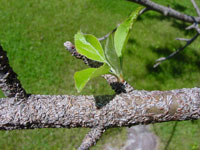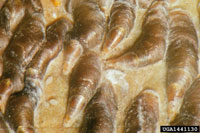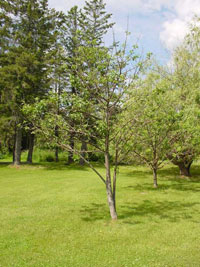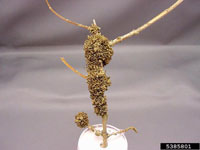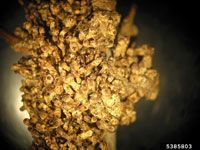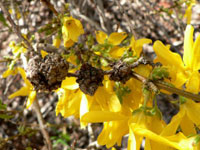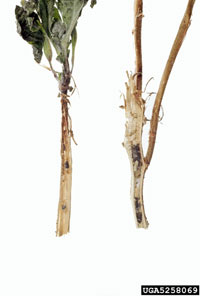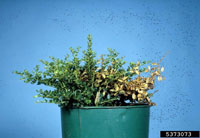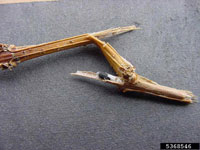Extension > Garden > Diagnose a problem > What's wrong with my plant? > Deciduous Trees > Forsythia > Dead branch or branch dieback
Forsythia > Stems/branches > Dead branches or branch dieback
1 of 5
Winter injury
- Tip dieback is common
- Depending on severity of winter, stems dieback to crown or at least to snowline
- May produce leaves and even flower buds, but dieback in June
- More information on Winter injury
2 of 5
Botryosphaeria Canker
Botryosphaeria dothidea
- Leaves on one or more branches wilt, turn brown and die
- Bark on infected branches is darker, cracked, or blistered at the site of the canker
- Wood beneath the canker is dark brown
- Common on shrubs stressed by drought, winter injury and other factors
- More information on Botryosphaeria Canker
3 of 5
Oystershell scale
Lepidosaphes ulmi
- Light to moderate infestations show little or no symptoms
- Severe infestations can cause chlorotic, stunted foliage
- Dieback and cracked bark can result from heavy infestations
- Light to dark brown, elongated, 1/10 to 1/8 inch long oyster-shell shaped scales found on bark
- More information on Oystershell Scale
4 of 5
Phomopsis Gall
Phomopsis spp.
- Galls are round woody balls made up of many short woody nodules clustered together
- Galls may occur individually or be clustered on twigs and branches
- Galls are 1/4 to 2 inches across
- Galls may girdle and kill small twigs and branches
- Infected shrubs may show stunted growth and loss of vigor
- More information on Phomopsis Gall
5 of 5
Twig blight
Sclerotinia sclerotiorum
- Leaves and twigs on one or more branches die suddenly
- Common on branches found near the ground
- White, fuzzy fungal growth may be seen on infected branches
- Hard black bodies (sclerotia) are found on the inside of infected twigs when split open
- Most common in nursery settings under cool, wet conditions
- More information on Twig blight



